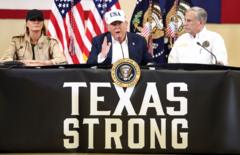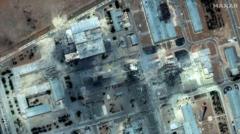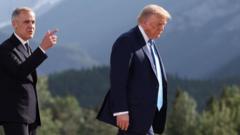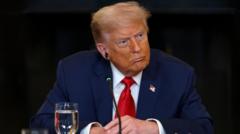Struggling to secure agreements, Trump's pivot on tariffs highlights the complexities of international trade dynamics.
Trump Postpones Tariffs Amidst Global Trade Tensions
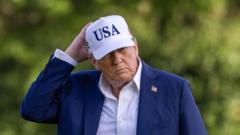
Trump Postpones Tariffs Amidst Global Trade Tensions
Imminent trade tariffs face delays as President Trump's administration grapples with negotiating challenges.
In an unexpected move, President Trump's administration has delayed the implementation of planned tariffs, originally set to commence on Wednesday, now pushed back to August 1, 2021. The initial promise of "90 deals in 90 days" looks increasingly unrealistic, as analysts suspect the potential for further postponements.
Treasury Secretary Scott Bessent has been vocal about focusing efforts on the 18 nations responsible for the bulk of the US trade deficit, a critical point of contention in ongoing negotiations. Current communications from the White House echo previous strategies, recycling the longstanding approach associated with trade discussions but adding little new insight.
The latest timeframe extension has come without sparking significant market instability, suggesting a growing investor belief that the administration may lack the resolve to follow through on trade threats. Observers note the phenomenon of TACO - "Trump Always Chickens Out" - as traders remain cautious about possible inflations linked to trade disputes.
With Japan and South Korea identified as initial targets, tensions are mounting, particularly from Japan, where officials have hinted at considering the implications of their substantial holdings in US debt. The broader global trade landscape reflects this unease, exacerbated by a notable decline in the value of the dollar this year, contradicting earlier analyses expecting currency strength as a bulwark against inflation.
Trade data has begun to cascade, revealing shifts as US tariffs take hold. Chinese exports to the United States have dipped significantly, while their volumes to other nations have surged, signalling a potentially enduring realignment in global trade patterns. US tariffs are now effectively around 15%, a stark rise from historical averages of just a few percent.
Though US Treasury revenues from tariffs have seen record highs recently, with rising collections in May, analysts warn that America's protective trade policies may inadvertently drive international partners to foster their own trade alliances, thereby reshaping the global economic landscape. With the situation remaining fluid, market responses may shift rapidly as developments unfold.


